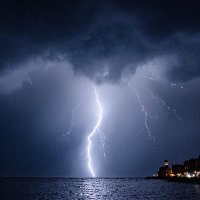
Jake Stehli
@eljakeo30
My ocean is the atmosphere.
It's where I live, swim, & play!
Sit back and watch the sky dance!🌪️🌌
Storm Chaser and Aurora Hunter.🌌🌪️
ID: 2255630960
20-12-2013 23:07:42
21,21K Tweet
3,3K Followers
2,2K Following

This was only a KP1 in Fairbanks at our Airbnb. As long as skies are clear, Alaska is a cheat code for seeing auroras 😄 Jake Stehli Dr. Tamitha Skov #northernlights #AuroraBorealis


When the Badlands come alive, your imagination runs wild. AUG 12, 2024. Drumheller, Alberta. Harlan Thomas theaurorachasers James Rowley-Hill Dr. Tamitha Skov RASC Calgary Centre #aurora #Auroraborealis #northernlights Chris Wicklund Auroras













Another reason to go on one of Vincent Ledvina 's Alaska Aurora Tours! Haha

Jure Atanackov Jake Stehli The boundary in 1859 seems to have been at 20 deg geomagnetic latitude, so not so different from earlier this year. sciencedirect.com/science/articl…







